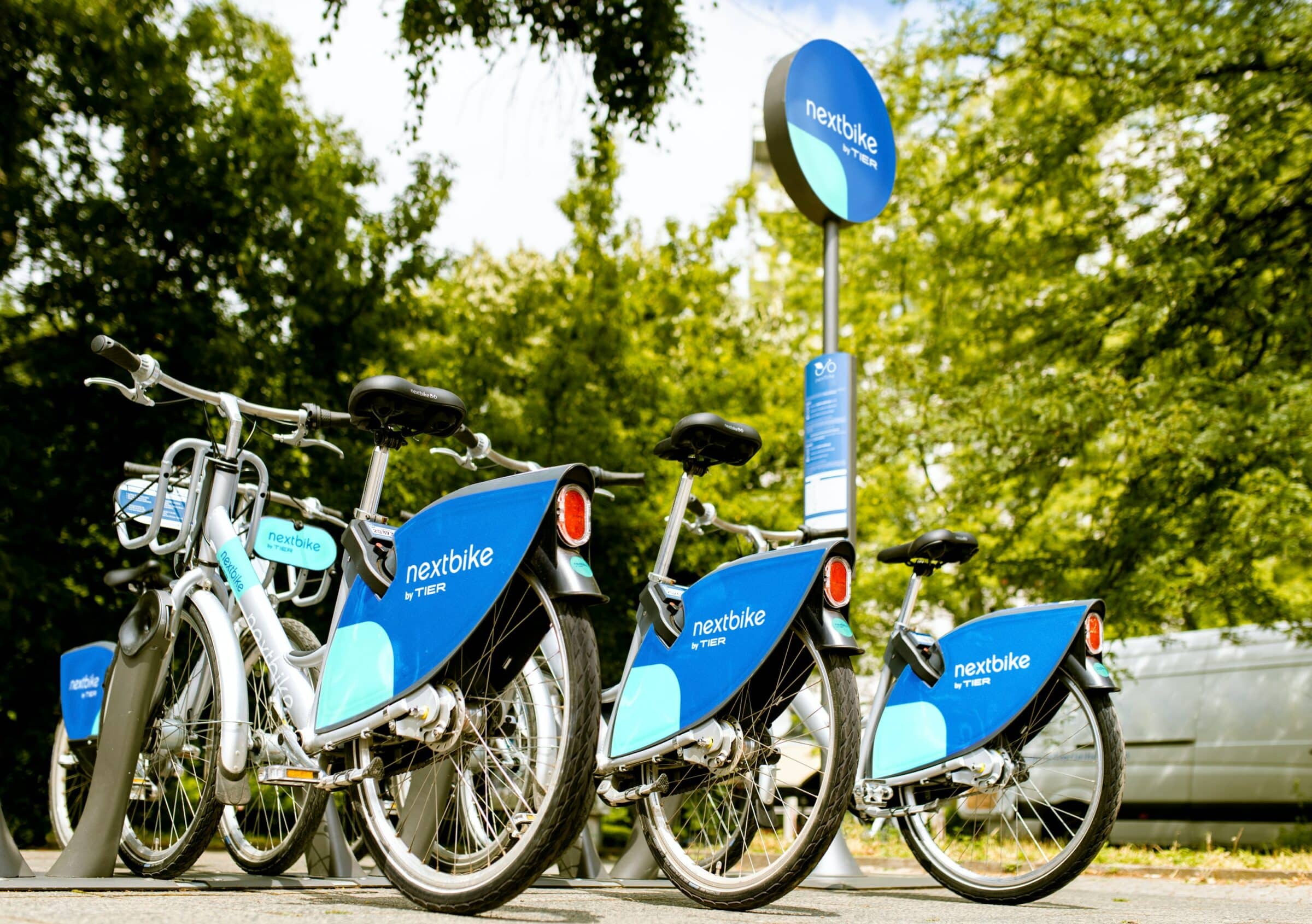The Internet of Things (IoT) is one of the most crucial technological developments in recent years.
However, as more and more devices become connected, there is a growing need for a local hub or central point through which these devices can communicate with each other and with the internet – this is where IoT gateways come in.
This innovative solution to complex issues within IoT ecosystems is changing the way companies functioning within the IoT space operate, allowing for a more seamless and efficient overall network.
But what exactly are IoT gateways and how do they work?
In this guide, we will answer these questions and more as we explore the world of IoT gateways.
What is an IoT Gateway?
An IoT gateway is a physical device or software program that serves as the critical link between connected devices between a local IoT network and cloud services.
IoT gateways are partly needed as they provide long haul communications for power sensitive sensors and devices that rely on short range radio networks such as Bluetooth Low Energy (BLE), ZigBee, Z-Wave and plugged in devices that use Wi-Fi.
They can also be used as gateways for longer range sensors such as LoRaWAN sensors.
They collect data from various IoT sensors, IoT modules and smart devices, acting as an intermediary that processes and encrypts this data before it’s sent to a cloud server.
Using this data, an IoT gateway performs several crucial roles such as data filtering, security, protocol translation, and device connectivity management.
By pre-processing data locally before sending it to the cloud, gateways reduce latency, save bandwidth, and, in certain cases, can even operate autonomously when a cloud connection is not available.
In essence, they act as a bridge between the local network and large-scale cloud servers. By streamlining communication between devices and the cloud, these gateways seamlessly and significantly enhance the efficiency and versatility of IoT networks.
How Do IoT Gateways Work?
IoT gateways work by facilitating two-way communication between various devices.
They collect data from IoT devices connected to them within a specific IoT ecosystem, often using various data acquisition systems. This collected data is then translated into a protocol suitable for long-distance transmission and sent to the cloud for further processing and analysis.
Similarly, they receive data or commands from the cloud and translate them into a device-compatible format.
However, since IoT gateways can process and filter data locally, rather than sending all raw data to the cloud, they can save the power and battery life of IoT devices and reduce network or cloud loading.
This ability allows for more efficient use of resources and cost savings across a sustained period.
In addition to this, IoT gateways also manage device connectivity, ensuring secure and reliable data transfer.
Furthermore, they can conduct local analytics and decision-making, enabling them to filter and summarise data, which reduces the volume of data that needs to be transferred, saving bandwidth and lowering latency.
Thus, they play a vital role in managing, controlling, and securing the IoT ecosystem.
What’s the Difference Between an IoT Gateway and a Router?
An IoT gateway and an IoT router, while they may seem similar, actually serve distinctly different purposes.
An IoT managed router primarily directs traffic on the Internet to a local hub using standard internet or Wi-Fi protocols. By connecting your local network to the internet, a router allows devices on your network to communicate with devices on other networks.
On the other hand, an IoT gateway facilitates communication between non-standard IoT devices and the cloud. It interprets and translates data from local devices into a format suitable for transmission over long distances to the IoT cloud gateway, and vice versa.
What’s more, an IoT gateway provides additional functionality such as data filtration, local analytics, protocol translation, data security, and device connectivity management, making it a more complex and versatile component than a traditional router in the context of an IoT network.
To further expand on the disparity between an IoT gateway and an IoT router, it’s important to understand that an IoT gateway does more than transport data packets.
While a managed IoT router primarily controls the secure flow of data between networks, an IoT gateway takes on a more nuanced role.
It not only facilitates communication between non-standard IoT devices and the cloud but also performs local data processing, protocol translations, and ensures data security.
These added complexities enable IoT gateways to handle a diverse spectrum of data from multiple sources, interpret it, and make autonomous decisions.
This contrasts with an IoT router’s primary function of securely directing traffic between closed or open networks. This makes IoT gateways a vital and multifaceted component of many IoT ecosystems.
To learn more about how to choose a secure, managed IoT router, visit our services page or contact our team of experts.
IoT Gateway Architecture
There are many key components to effective IoT gateway architecture, with each being important.
Please see our summary below of the key components and layers that make up an IoT gateway architecture:
- Device layer: An IoT gateway’s hardware contains a microprocessor or a controller (depending on processing speed and required memory), IoT sensors, circuitry, and a connectivity module, such as Bluetooth, cellular or Wi-Fi.
- Sensor layer: The layer where devices collect data for future processing, and the layer in which IoT devices operate.
- Network or data acquisition layer: The layer in which data is aggregated from various sources and transmitted to a processing system securely.
- Data pre-processing layer: This is the layer where IoT sensor data goes through pre-processing and basic data analytics, allowing for a reduction in data volume. This data is then transmitted onto a cloud-based infrastructure. Additionally, this is the layer where IoT edge devices operate.
- Cloud analysis or application layer: At this layer, cloud-based infrastructure performs in-depth data analytics to provide users and applications with a wealth of analytics and data.
- Operating system: The operating system acts as the software that governs the gateway hardware and other applications on the device. The selection of the operating system, such as Java, Linux, RTOS and so on, hinges on the specific application of the gateway.
- Hardware abstraction: The abstraction layer enables the development and management of software independently from the hardware. This provides a more flexible approach to application design and simplifies the process of updating and adapting the software.
- Device management and configuration: This layer of the IoT gateway maintains records of all linked devices and sensors it interacts with. It oversees the configurations, settings, properties, and devices connected within its jurisdiction.
- Security: Given the integral role played by security in gateway architecture, it is vital to ensure that gateways have trusted identities, robust encryption, and cryptographic authentication mechanisms. This layer offers a secure boot, which safeguards devices from unauthorised access whilst maintaining data integrity and confidentiality.
- Actuator drivers and sensors: This layer acts as the intermediary between the sensors, modules, and the device. The integration of certain stacks is dependent upon the specific requirements of the application.
- Firmware Over the Air updates: Preserving the integrity of the device is fundamentally vital for which keeping the device firmware updated and enabling security patches and fixes is necessary to defend against the ever-evolving threats. This layer ensures that Firmware Over the Air (FOTA) updates are carried out securely and efficiently to safeguard device memory, power, and network bandwidth.
- Data management: IoT gateways control the flow of data between sensors, connected devices, and the cloud. The data management layer is responsible for data streaming, filtering, and storage, as well as controlling data traffic to reduce delays and maintain the reliability of devices.
- Gateway data transfer: This layer regulates the gateway’s internet connectivity via a 5G/4G/3G/GPRS modem or IoT module, Ethernet, or Wi-Fi. It also scrutinises and decides which data requires transmission to the cloud and which data should be stored for offline processing to conserve processing capabilities and data plan expenses.
- Custom software application: IoT gateways incorporate bespoke software to cater to the distinct requirements of specific applications. This layer liaises with every other layer to manage data requirements for the IoT application in an effective, secure, and efficient manner.
- Cloud connectivity manager: This layer is tasked with ensuring a smooth and secure connection with the cloud platforms, along with ensuring the authentication of devices and the cloud.
Benefits of Using an IoT Gateway
While some IoT devices produce large quantities of data, they are often intelligent and can be configured to reduce the overall payload. Many devices, however, need to be configured by an IoT gateway or use one to decide which data to upload and which to store locally or ignore.
This is important as an ill-equipped IoT ecosystem can result in data overload, expensive connectivity requirements, bottlenecks, and potential data loss. This can hamper the performance of IoT applications and prevent companies from gaining actionable insights from their data.
IoT gateways offer a managed solution to this problem by providing a locally situated centrally managed hub for securing the local network, managing, processing, and transmitting data. This offers numerous benefits, including:
Data Processing and Minimisation
IoT gateways offer significant advantages in terms of data processing and minimisation.
The ability for these gateways to process data locally, at the edge of the network, proves highly beneficial.
Rather than transmitting raw, unfiltered data to cloud services, an IoT gateway can filter, compress, and summarise the information, thus minimising the sheer volume of data being sent.
This process not only reduces latency and saves bandwidth but also enhances the efficiency of the entire IoT ecosystem.
Furthermore, local data processing can provide instant analytics and decision-making capabilities without the need for cloud connectivity, thereby ensuring optimum performance even in challenging network conditions.
Therefore, the roles of data processing and minimisation, delivered by IoT gateways, are integral to the efficient functioning of an IoT network.
Additional Security
IoT gateways provide an added layer of security that is crucial in protecting the integrity of an IoT network.
They can perform security functions such as encryption, anomaly detection, and firewall implementation, which collectively enhance the network’s resilience against potential cyber threats.
Since these gateways handle data transfer between the local network and the cloud, they serve as an important checkpoint, preventing unauthorised access and safeguarding sensitive data.
Moreover, they can authenticate devices connected to the network, adding another dimension of security.
Thus, by integrating advanced security features, IoT gateways contribute significantly to the secure operation of an IoT ecosystem.
Decentralised Infrastructure
A key benefit of an IoT gateway is its inherent support for a decentralised infrastructure.
Traditional networks often rely on centralised systems, which can become bottlenecks and single points of failure.
By employing an IoT gateway, devices can communicate and process data locally, reducing the reliance on a central server for decision-making and data processing.
This decentralised approach enhances the robustness of the network, allowing for continuous operation even when certain parts of the network are interrupted, or the central server is down.
It also enables faster response times, as data does not need to travel as far to be processed, thereby reducing latency, and improving the overall performance of the IoT ecosystem.
The support for a decentralised infrastructure provided by IoT gateways is an essential component in building efficient, resilient, and high-performing IoT networks.
Use Cases of an IoT Gateway Over an IoT Module
There are numerous advantages an IoT gateway can offer an IoT ecosystem, but in which use cases is it currently being used to its optimum potential?
We’ve listed four key applications where IoT gateways are being utilised:
Smart Homes
The rise of smart home technology has allowed homeowners to remotely control and automate various aspects of their homes, from lighting and temperature to security systems.
In smart homes, IoT gateways hold a pivotal position, functioning as the nucleus of a connected ecosystem. They facilitate seamless communication between various devices such as smart thermostats, lights, security systems, and appliances.
By processing substantial amounts of data generated by these devices locally, IoT gateways reduce latency, increase speed, and enhance overall smart home functionality.
Moreover, they offer an added layer of security by encrypting data and preventing unauthorised access, thus reinforcing the protection of sensitive information.
The ability of IoT gateways to support a decentralised network also ensures that smart home operations continue uninterrupted, even in the event of a central server failure.
Using IoT gateways, smart homes contribute to a safer, more efficient, and highly responsive living environment in progressive communities while allowing service providers to offer a scalable, fully managed, resilient, and reliable service.
Emission Monitoring
As governments, organisations, and businesses globally consciously seek to reduce their carbon footprint and contribute to a greener earth, emission monitoring has become a critical aspect of operations.
IoT gateways are deployed in various industries, such as manufacturing and transportation, to gather and transmit real-time data on emission levels.
By leveraging sensors and IoT technologies, these gateways can detect pollutants and analyse their concentration levels, providing valuable insights into air quality and emission rates.
This data can then be used to make informed decisions on reducing emissions, optimising operations, and complying with environmental regulations.
With strict guidelines being set out across the globe, such as those at COP26, IoT gateways play a crucial role in facilitating this process by enabling secure and efficient communication between emission sensors and the cloud infrastructure.
Industrial Equipment Monitoring
The use of IoT in factories goes far beyond work on the factory floor. From monitoring the performance of heavy machinery to tracking the efficiency of production lines, Industrial IoT (IIoT) is transforming the way factories operate.
Robust IoT gateways play a pivotal role in this transformation. These gateways, installed on or nearby industrial equipment, collect real-time data about performance metrics such as machine uptime, energy consumption, and operational efficiency.
This data can be analysed on-site for immediate insights or sent to the cloud for more in-depth examination.
In the event of an operational anomaly or equipment failure, the gateway can promptly alert the appropriate personnel, thereby minimising downtime, and maintenance costs.
These forms of gateways are also increasingly being used in large warehouses and logistic centres. Thus, the incorporation of IoT gateways in industrial settings is enabling smarter, more efficient operations, and paves the way for a new wave of progressive industry.
Micromobility
While gateways are often thought of as static or in-door, some IoT gateways are industrial in nature or designed for hostile and even mobile environments.
For example, in recent years, cities across the world have seen a vast implementation of micromobility vehicles, such as rental e-scooters, across their cityscape.
For these vehicles, remaining connected to their network is paramount, which is why they often utilise IoT gateways to facilitate critical functionalities. Mobile IoT gateways communicate with the rider through the handlebar display, providing essential information such as battery life, speed, and GPS navigation.
The gateway communication device serves as a conduit for real-time data transmission among the vehicle, the rider, and the service provider.
It monitors the vehicle’s status, including battery level, location, and speed, and promptly relays this information to the service provider. Some are in the vehicle, while others are located at important storage or recharge points.
In the event of a theft or unauthorised use, the IoT gateway can send alerts to the service provider or even disable the vehicle remotely.
Therefore, through the efficient management of data flow and connectivity, IoT gateways are instrumental in the smooth and secure operation of micromobility services.
How to Gain Seamless IoT Connectivity With Maximum Uptime
In conclusion, sophisticated IoT gateways are helping to revolutionise the way we interact with our environments, from our homes and transport systems to the industrial sector and for environmental monitoring.
They are helping to pioneer a shift towards a more connected future, providing secure, efficient, and low-latency communication between devices and networks.
As an industry leader in IoT connectivity solutions, Caburn Telecom is at the forefront of this transformation, offering unrivalled IoT connectivity solutions that ensure maximum uptime and seamless performance.
So, whether you’re looking to enhance your smart home experience, streamline your micromobility service, monitor emissions more effectively or provide optimised industrial processes, contact Caburn Telecom today to learn more.




